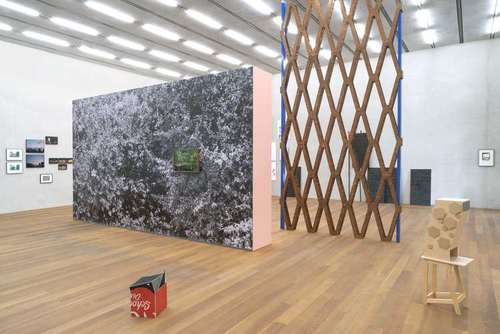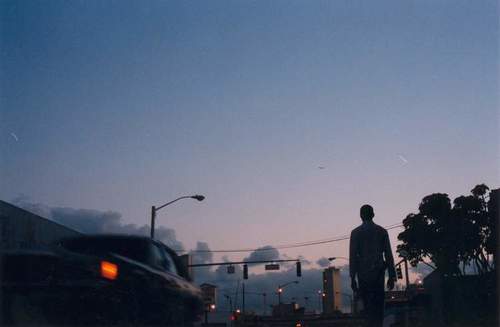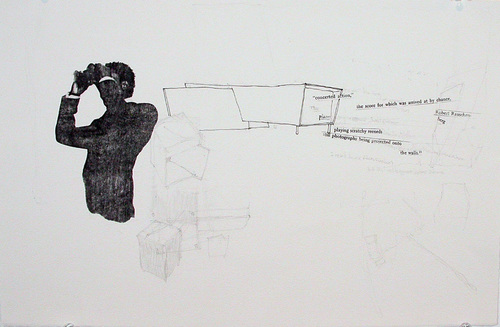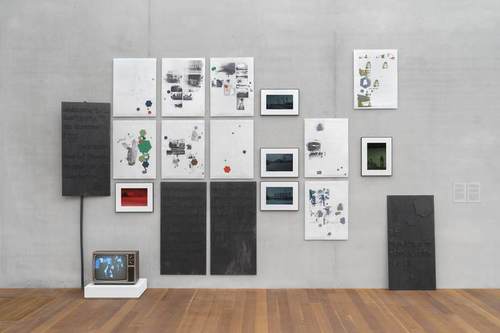ADLER GUERRIER, An Exploration of Sense





LIGHT
South Florida sun, windows filtering. I only think of light as in the visual. I don’t think of light as a weight, even though I probably should. What comes to mind is actual lighting and seeing what’s surfacing. Enlightenment comes into mind. There is a piece in my show Adler Guerrier: Formulating a Plot at Pérez Art Museum Miami that has a sort of light fixture as part of a theme. There is this lamp that is styled in the way of street lights in Paris. Gas lamps the way they were. When I saw that lamp and saw it on that building, I went back to just photograph that and it became a sort of item to make a series of work from and the whole thing had to do with the way adding light casts out darkness.
ILLUMINATION
In my work, I tend to just use found lighting. I don’t add light, especially at night, which forces me to find places that have particular lighting where all the interesting physical elements of the landscape, architecture or plants, are well defined or defined by the lighting there. During the daytime, in South Florida, it is not a thing to think about so much. Only the direction of lighting and the time of day, clearly. At noon it is the brightest light. Deep shadows are not always a good thing. Everything is lit so everything kind of looks the same, whereas in the early morning it is moody. I like the way light is filtered through plants. I look for situations and places where light is as much of an element that shapes space, that shapes objects, as other physical attributes like concrete and architecture.
VISION
There are two words there that are tricky. One is “vision.” What I envision sometimes is not so much physical, is not so much the work. It tends to be a couple of layers around the work. Sometimes I want to make a work that makes me think about a,b,c and makes me feel x,y and z. I know these six things but a lot of times I don’t know what that looks like, don’t know how that is going to be made and don’t know how important those six things are. The idea of vision is only a blueprint to make an artwork and really, in making the work, I sometimes find that something I wanted early on, I totally discard or I have to put aside. So much of my practice is a playing of what I want to do and contextualising that on site and finding that the site has really good things to offer and bring those forth and then finishing the work. That’s how vision comes into light. The process needs to be grounded somewhere. It needs parameters that are more than me.
MIAMI
I have lived here for most of my life now. This is the place where I think, this is the place where there is ease in the process of creating and thinking and conceptualising. It is a sort of comfort that comes with being at home and clearly prize that more than anything else even though there is all the other factors about Miami, like light and temperature in the winter months, and even our diversity. I am always finding myself discovering new little things or new thoughts and knowledge that are connected to other people who come here and pass through. This is a dynamic place. I like it a lot.
COLOUR
Colours are important. I like colours. Colours tend to be the distinctive marks that make a place. The palette that we choose for ourselves, to either wear, or colour our homes, or to make artwork with, tend to be the specific things that indicate intention. Colours for me are indicators that make a thing a thing. The palette that appears in South Florida is not just specific to South Florida. Other places in the world use that palette, but here in South Florida, when we see them, there is something about the combination of here and the palette that’s like “oh yes, this is a Miami thing, this is a Miami moment.” It makes your day, it makes a building, it makes a moment more special. This is where colours come into play. Colours are part of a language that is the primary handle to connect with something. In Miami we can show colours. We see colours really well, I guess. It is a vital thing.
THEME
The themes in the show [Formulating a Plot at Perez Art Museum Miami] are about this idea of place as stage and where both, the individual and communal narratives are developed. The individual narrative is as much mine as the artist who is developing the work and the communal narratives are the secondary and tertiary stories that are shared by either the viewer or are implied by Miami being a place that is in the stories. Another theme in the show has to do with character and by that we mean individual figures that help develop works and that help with development of narration in the works. The flaneur is one of them. The story about Amiri Baraka is another. The short story of Tang is another one. The figures that appear in the political signs are a fourth. Those are all sorts of characters that become a beginning place to explore really interesting stories within the works. A third theme is geometric language as a marker of an objective tertiary point to narrative. By that we mean that it is sort of a language that we find, like the concrete blocks, like the political signs. Those are a language that serves other entities that are also background to bigger things; that by bringing them back into the show, they become platforms for other things. They become platforms for poetic gestures in my work, as much as they were a platform for either decoration or for political engagement.
GEOMETRICS
There are a few that flow into the work. I use geometrical language as an emphasis to mirror manmade language that is imposed on landscape. When we look at the landscape, architecture has straight lines and angles. Plant life does not always. We have flat lines like the line of the horizon, but usually the natural landscape is highly textured and highly complex. Geometric language tends to read as intentional and purposeful. This is where I tend to come into that space where we are seeing geometric language against a natural language and trying to decipher what was the original purpose for those geometric languages and how I can reuse them as well within the work for them to hold new meaning. I like the fact that geometric language is in a way a generic language. It is just rectangles or squares or circles or rhomboids. They do not necessarily hold true significance. I try to use them to add significance to them, so the “BLCK” works have a 12-sided polygon that I tend to use to connect to a history of protest, a history of descent. It becomes a marker, a repeated gesture. So even when I am making work that is not explicitly about that sort of consideration, by just introducing this polygon within a drawing or a sculpture, you hint that this is one of the considerations in the work.
INSPIRATION
One of my favourite films is “Two or Three Things I Know About Her” by Jean-Luc Godard. I really like that. I actually made artwork with images from the movie. The movie is, in a way, an ode to Paris. The “Her” is the city of Paris. It is Paris as a stage for political development. It is kind of hard to say what it is about. I also like “Alphaville,” also by Godard. That’s more of a sci-fi, also staged in Paris. In terms of books I already mentioned the short story “Tang” by Chester Himes. I like him a lot. I also like essays. I like James Baldwin. I like Ralph Ellison. Just yesterday I was reading a catalogue for Renee Green and I think I like her a lot. I like stories where I can participate in the development of a character in relation to their time and place and where characters are in that existential arch of becoming who they are.
